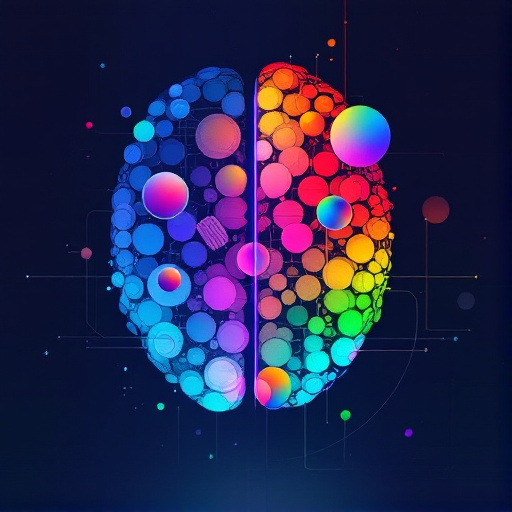Featured Articles
- From Doodles to Dashboards: The Rise of Handmade UI Elements in Professional Web Design
- Invisible Design: How Micro-Interactions Shape User Experience in Unexpected Ways
- The Art of Failure: Designing UI for User Rejection and Forgotten Experiences
- The Hidden Impact of Microinteractions: Small Details, Big User Experience on Website UI
- The Hidden Psychology: How Color Choices in UI Can Evoke Unexpected User Emotions
From Doodles to Dashboards: The Rise of Handmade UI Elements in Professional Web Design
From Doodles to Dashboards: The Rise of Handmade UI Elements in Professional Web Design
The evolution of web design has taken a delightful turn, favoring handmade UI elements over traditional methods. Driven by a desire for authenticity and creativity, this shift is transforming digital experiences, making them more engaging and personalized.
The Backstory: A Surge in Authenticity
In a world increasingly saturated by sterile, corporate designs, there’s been a resurgence of handmade elements in UI/UX design. But why now? As users seek more personalized and engaging experiences, the rise of handmade design is a natural response to an audience grown weary of automation and templating.
Why Handmade?
From an intuitive sense of creativity to better resonance with audiences, the handmade movement in UI design has several compelling reasons behind it. Handmade UI elements can lend a sense of warmth, personality, and authenticity to digital interfaces. The Webby Awards reported a 40% increase in entries from teams prioritizing unique, crafted designs over generic, cookie-cutter templates in 2022. [source]
Statistics that Speak Volumes
Research conducted by Adobe shows that 61% of consumers prefer brands that reflect authenticity. Moreover, sites featuring personalized, unique designs see a 20% increase in user engagement, according to a Forbes study in 2023. This data reveals the tangible results that can stem from a more handcrafted approach.
Case Study: A Successful Transformation
Consider the case of a small, local bakery that redesigned its website. Initially, they used standard templates—which, while functional, did little to convey the charm and warmth of their baked goods. After conducting a series of workshops where they sketched new UI elements, they developed a site featuring doodle-style graphics and warm, inviting colors. As a direct result, their online orders increased by an astounding 150% within three months. Their story exemplifies the effective transformation from conventional digital design to a more personalized, handcrafted approach.
The Practical Side of Doodles
You might be wondering: how can doodles and handmade elements integrate seamlessly into a professional environment? The key lies in balance. For instance, think of the app “Headspace,” which uses simple, playful illustrations to enhance user experience without detracting from its professionalism. A research piece published in the “Journal of Usability Studies” suggests that users of apps employing informal visual elements report higher satisfaction rates—a valuable insight for web designers everywhere. [source]
Humor: The Great Equalizer
Who said UI design can’t be fun? Integrating humor through quirky graphics and playful animations offers users a frictionless, delightful experience. It’s like adding sprinkles to a cupcake; it makes everything more appealing! A notable example is the website for “Mailchimp,” where their anthropomorphic chimp takes users through various features while throwing in witty remarks. Customers love it, and the site has a significantly lower bounce rate compared to competitors.
The Evolution of Trends
Handmade UI elements have roots stretching back to the very beginnings of the web—remember the GeoCities era? Well, these designs have transformed as technology has advanced, shifting from purely nostalgic to a thoughtful, intentional use of imperfections. Digital artists are now leveraging tools like Procreate for iPad to create unique graphics that resonate authenticity. Not only does a handmade approach attract attention, but it also distinguishes brands from their competitors in an oversaturated market.
Fostering Community Connection
Emphasizing community is at the heart of handmade designs. Many brands embrace user-generated content in their web designs, integrating real customer images or testimonials into their interfaces. This not only fosters connection but also creates an interactive platform for users. The popular shoe brand, TOMS, has successfully incorporated this approach, displaying original customer photos on their site, leading to increased loyalty and brand attachment.
The DIY Culture and Its Impact
As we advance, the “Do It Yourself” (DIY) culture has gained momentum. DIY means bringing in that personal touch, which has a unique sense of value in web design. Platforms like Etsy have seen exponential growth, aligning perfectly with this trend. Designers today search for ways to emulate this DIY ethos, infusing their projects with passion that mirrors artisanal craftwork—deviating from the sterile layouts once dominant across the web.
Conclusion: The Future is Handmade
As we look to the future of web design, handmade UI elements are more than a passing trend; they’re a symbol of our yearning for authenticity. From doodles to dynamic dashboards, the fusion of creativity and technology is reshaping our online experiences. The shift toward handmade elements is not just a design choice but a pathway to engagement and connection in an otherwise impersonal digital world.
And So, What’s Next?
The future of web design appears brightly colorful and whimsically authentic. With shifting user preferences and a demand for uniqueness, expect to see more brands venture into the realm of handmade design. It's a new dawn for creativity, leaving behind uniformity and embracing the joy of creation. So, ready to doodle your way into design? Your audience awaits!
Final Thoughts – Unleash Your Creativity
The takeaway? Don’t shy away from bringing your doodles to life on the digital canvas. Embracing handcrafted designs opens the door to innovation, connection, and, ultimately, a brand that speaks to its users on a personal level. Start sketching; you never know where your imagination may take you!




